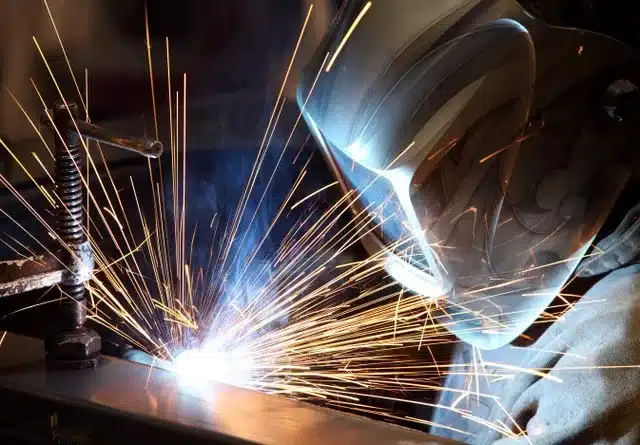Ensuring Safe Welding Practices

Welding is critical in various industries, from construction and manufacturing to automotive and aerospace. While it’s a vital skill, welding can also be hazardous if not performed with the utmost care and attention to safety. This is why welding safety training is essential to any welder’s education and career.
The Importance of Welding Safety Training
Preventing Accidents
Welding involves the use of intense heat, high-voltage electricity, and potentially toxic fumes. Without proper training, individuals may not fully understand the potential dangers and safety measures associated with these elements. Welding safety training equips workers with the knowledge and skills needed to prevent accidents, such as burns, electrical shocks, and fires.
Health Protection
Welding generates various hazards that can affect a worker’s health in the long term. For instance, prolonged exposure to welding fumes can lead to serious respiratory conditions like metal fume fever or lung cancer. Through safety training, welders learn how to use protective gear such as respirators and helmets and understand the importance of proper ventilation systems to safeguard their health.
Fire Prevention
Welding often involves open flames, sparks, and hot metal fragments, making fire a significant risk. Welding safety training teaches workers how to handle these fire hazards, use fire extinguishers effectively, and implement fire prevention strategies, reducing the chances of workplace fires.
Equipment Familiarity
Welding equipment can be complex and potentially dangerous if not handled correctly. Welding safety training ensures that workers are familiar with the various types of welding machines, their proper operation, and the necessary maintenance procedures. This knowledge helps prevent equipment-related accidents and malfunctions.
Key Components of Welding Safety Training
Hazard Identification: Identifying potential hazards associated with welding, including electrical, fire, arc flash, and health hazards. Workers need to understand what to look out for in a welding environment.
Personal Protective Equipment (PPE): Welding safety training covers the selection, fitting, proper use, and maintenance of PPE, such as helmets, gloves, safety glasses, welding screens, and flame-resistant clothing. Workers are taught when and how to wear these items to maximize their protection.
Safe Work Practices: Safe work practices include the correct welding techniques, proper handling of equipment, and safe work habits. Workers learn how to minimize risks and avoid common mistakes.
Fire Safety: Welding often involves working with flammable materials and generating sparks. Training includes fire prevention measures, how to use fire extinguishers and fire blankets, and what to do in case of a fire emergency.
Ventilation and Fume Control: Proper ventilation removes harmful welding fumes and maintains air quality. Training emphasizes the importance of ventilation systems and how to use them effectively.
Emergency Response: Workers are trained to respond to accidents and emergencies, including first aid procedures, emergency eyewash stations, and showers.
Regulatory Compliance: Welding safety training ensures that workers know relevant safety standards and regulations, such as those set by the Occupational Safety and Health Administration (OSHA) in the United States. Compliance with these regulations is crucial to avoid fines and penalties.
Welding safety training is fundamental to ensuring workers’ well-being and property protection. Investing in proper training reduces the risk of accidents and injuries and enhances the quality and efficiency of welding work. By prioritizing safety through comprehensive training programs, employers can create a safer work environment and uphold the reputation of their businesses while welders can enjoy long and healthy careers in this vital profession.